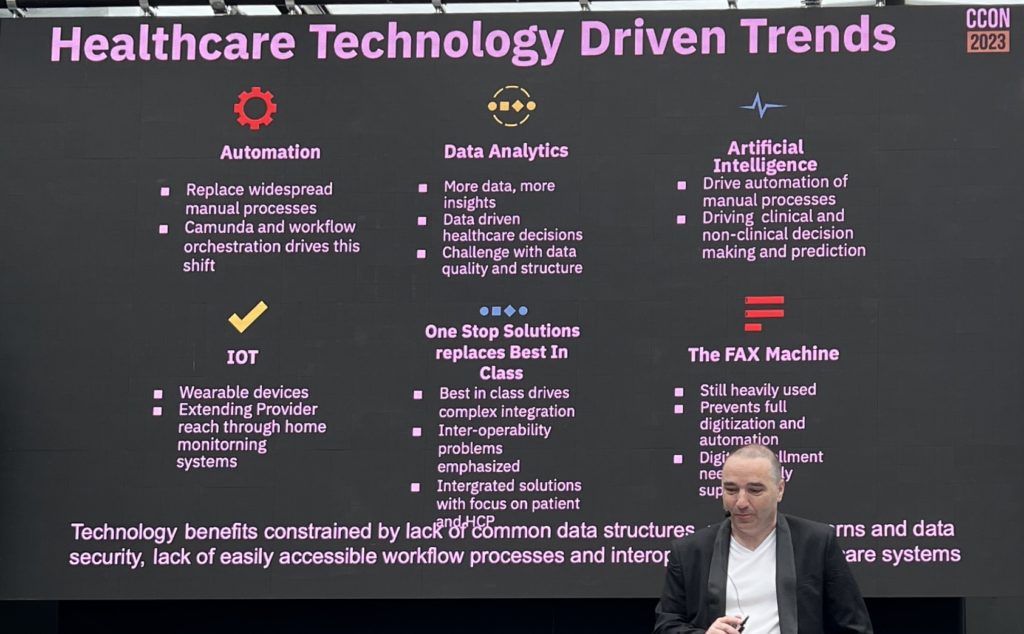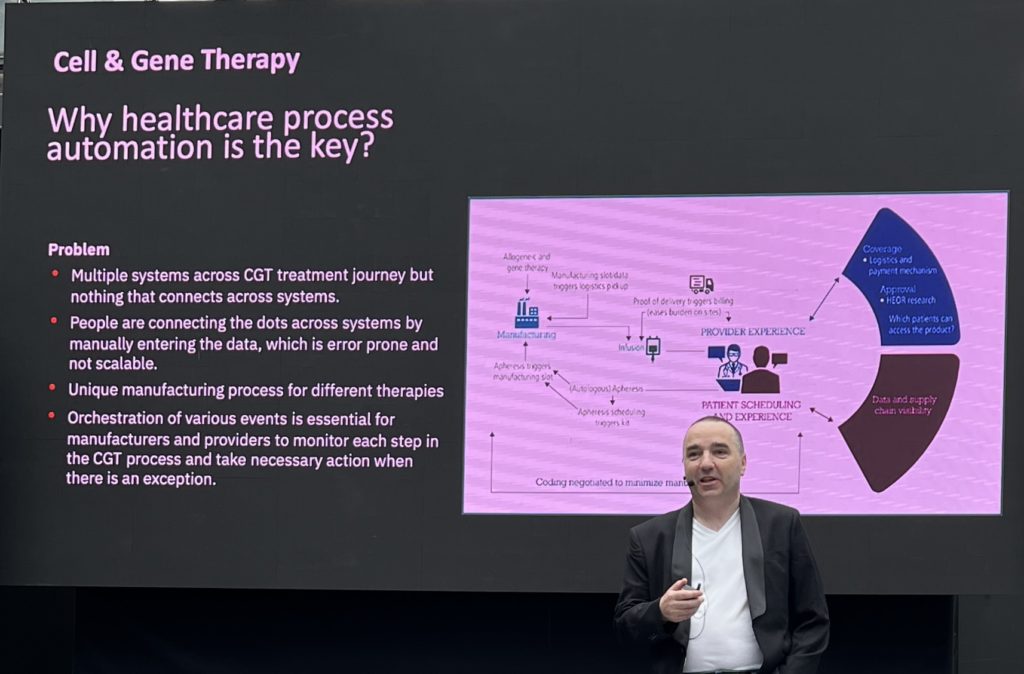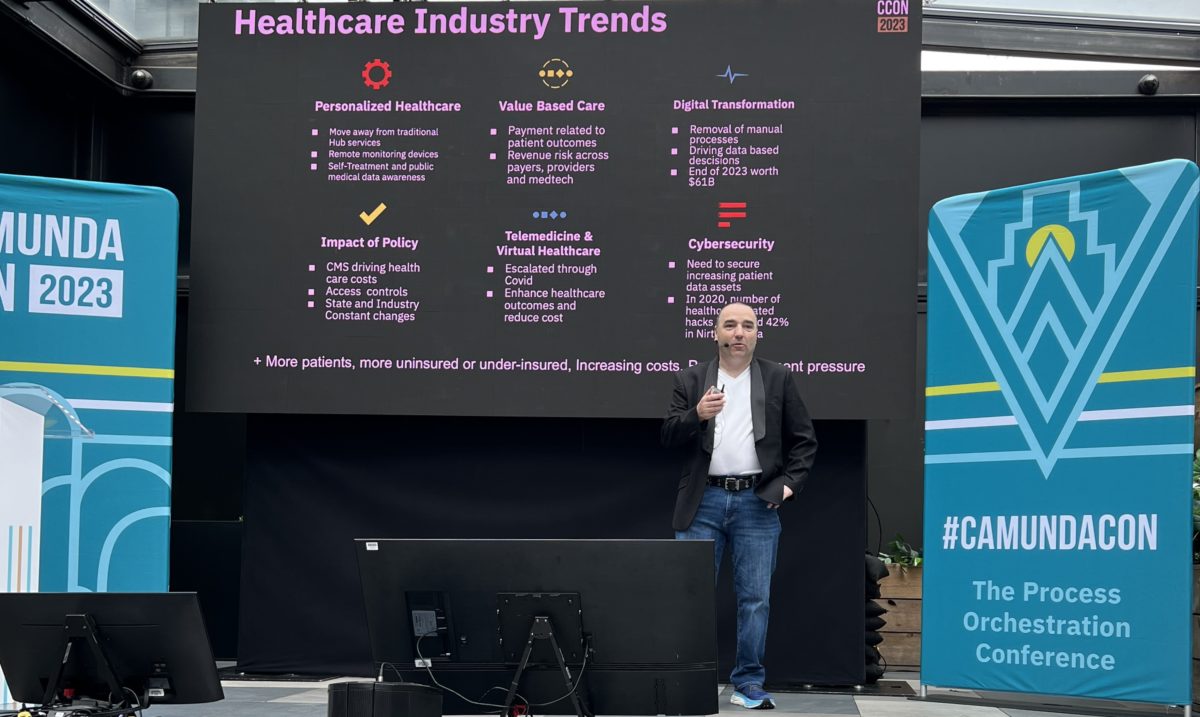Steven Gregory of Cardinal Health™ Sonexus™ Access and Patient Support, a healthcare technology provider, presented on some of the current US healthcare trends — including value-based care and telemedicine — and the technology trends that are changing healthcare, from IoT wearable devices to AI for clinical decisioning. Healthcare is a very process-driven industry, but many of the processes are manual, or embedded within forms, or within legacy systems: scheduling, admin/discharge, insurance, and health records management. As with many other industries, these “hidden” workflows are critical to patient outcomes but it’s not possible to see how the flows work at any level, much less end-to-end.

There’s some amount of history of clinical workflow automation; I worked with Siemens Medical Systems (now Cerner) on their implementation of TIBCO’s workflow more than 10 years ago, and even wrote a paper on the uses of BPM in healthcare back in 2014. What Steven is talking about is a much more modern version of that, using Camunda and a microservice architecture to automate processes and link legacy systems.
They implemented a number of patient journey workflows effectively: appointment creating, rescheduling and cancellation; benefits verification and authorization; digital enrollment; and some patient-facing chatbot flows. Many of these are simply automation of the existing manual processes, but there’s a lot of benefit to be gained as long as you recognize that’s not the final version of the flow, but a milestone on the journey to process improvement.
He discussed a really interesting use case of cell and gene therapy: although they haven’t rolled this out this yet, it’s a complex interaction of systems integration, data tracking across systems, unique manufacturing processes while providing personalized care to patients. He feels that Camunda is key for orchestrating complex processes like this. In the Q&A, he also spoke about the difference in ramp-up time for their developers, and how much faster it is to learn Camunda and individual microservices than a legacy system.

Great examples of moving beyond straightforward process orchestration for improving critical processes.


 Abdul and his team have built a smart healthcare suite of applications that are based on a broad foundation of data sources: he sees the data as being key, since you can’t look for patterns or detect early symptoms without the data on which to apply the intelligent algorithms. With aggregate data from a wider population and specific data for a patient, intelligent healthcare can provide much more personalized, targeted recommendations for each individual. They’ve made a number of meaningful breakthroughs in applying AI technologies to healthcare services, such as identifying gaps in care based on treatment codes, and doing real-time monitoring and intervention via IoT devices such as fitness trackers.
Abdul and his team have built a smart healthcare suite of applications that are based on a broad foundation of data sources: he sees the data as being key, since you can’t look for patterns or detect early symptoms without the data on which to apply the intelligent algorithms. With aggregate data from a wider population and specific data for a patient, intelligent healthcare can provide much more personalized, targeted recommendations for each individual. They’ve made a number of meaningful breakthroughs in applying AI technologies to healthcare services, such as identifying gaps in care based on treatment codes, and doing real-time monitoring and intervention via IoT devices such as fitness trackers.